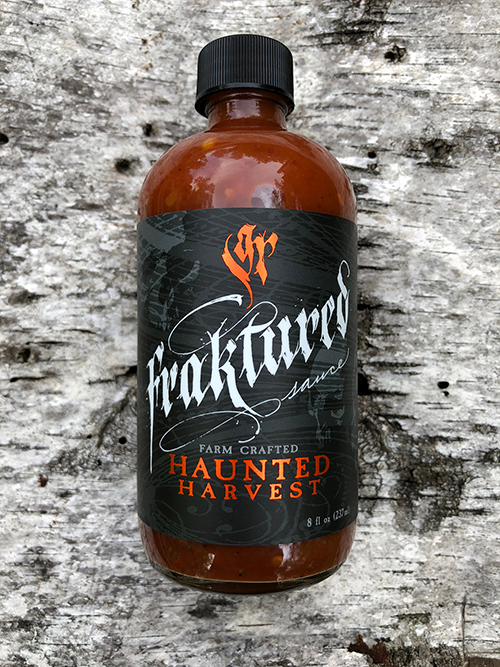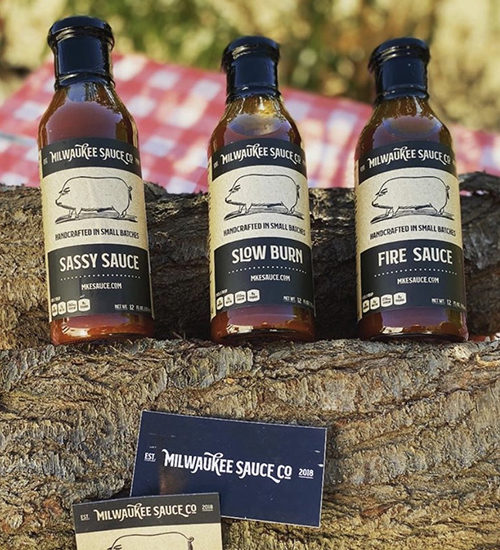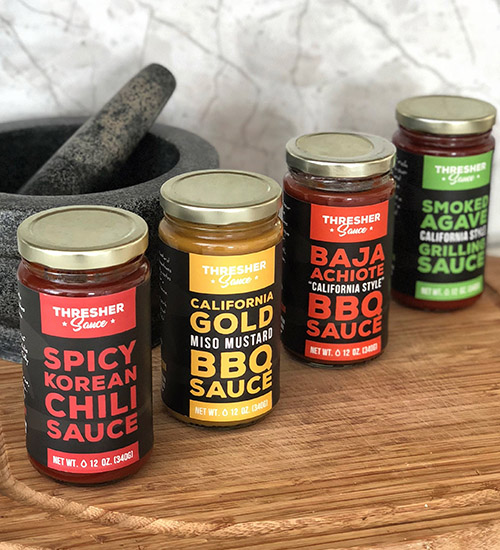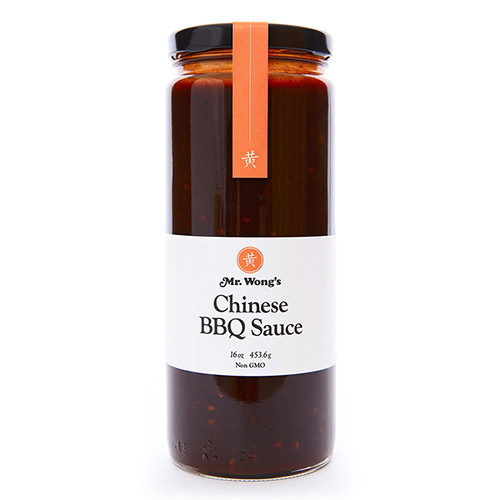BBQ Sauce Labeling Tips: Designing the Perfect Label for Your Market
This entry was posted on July 03, 2024 .
Creating the perfect BBQ sauce label involves a mix of understanding your market, highlighting essential ingredients, and using eye-catching design elements.
This guide will provide you with practical tips and insights to ensure your BBQ sauce labels stand out and appeal to your target audience.


Understanding Your Target Market for BBQ Sauce Labels
Identifying Gourmet Foodies vs. Casual Consumers
Knowing who you’re selling to is crucial for effective label design. Gourmet foodies and casual consumers have different expectations and preferences.
- Gourmet Foodies: Look for high-quality ingredients, unique flavors, and sophisticated packaging. They appreciate detailed ingredient lists, origin stories, and artisanal qualities that convey a premium product. The label should evoke a sense of exclusivity and culinary expertise.
- Casual Consumers: Prefer straightforward, easy-to-read labels with familiar flavors and appealing visuals. These consumers are likely shopping for family barbecues or casual gatherings and are drawn to bright, bold designs that promise delicious, hassle-free meals. Simplicity and clarity are key, with an emphasis on practicality and taste.
Tailoring Labels to Different Customer Preferences
Customize your label design to meet the specific preferences of your target customers.
- Gourmet Labels: Use elegant fonts, high-quality images, and detailed ingredient lists. Consider adding a narrative about the sauce's creation, special ingredients, or culinary heritage. Luxury packaging elements like foil stamping or embossing can also attract this segment.
- Casual Labels: Opt for bold colors, simple fonts, and clear flavor descriptions. Emphasize value, convenience, and versatility in cooking. Fun and vibrant designs can help the product stand out on crowded supermarket shelves and appeal to families and casual cooks.
Essential Elements of an Effective BBQ Sauce Label
Highlighting Key Ingredients
Customers want to know what’s in their sauce. Highlight key ingredients prominently on the label.
- Ingredient Transparency: List main ingredients on the front of the label. Consumers today are more health-conscious and want to see what they are consuming. Highlighting ingredients like organic tomatoes, raw honey, or apple cider vinegar can attract health-focused buyers.
- Organic/Non-GMO: If applicable, highlight organic or non-GMO ingredients. Certifications and seals from recognized authorities can add credibility and appeal to discerning customers looking for healthier options.


Flavor Profiles and Descriptions
Describe the flavor profile of your BBQ sauce to entice potential buyers.
- Flavor Descriptions: Use descriptive language to convey the taste, such as “smoky,” “spicy,” or “sweet.” Be vivid and evocative in your descriptions to create a sensory appeal. Phrases like "bold and tangy with a hint of sweetness" or "smoky heat with a touch of sweetness" can be very effective.
- Pairing Suggestions: Suggest foods that pair well with your BBQ sauce, like chicken, ribs, or vegetables. This not only provides practical use cases but also helps customers envision the sauce in their meals, increasing the likelihood of purchase.
Usage Suggestions and Pairings
Provide ideas on how to use the sauce to inspire customers.
- Serving Ideas: Include suggestions for marinating, grilling, or dipping. Offering versatile uses can make your product more attractive to buyers. For instance, "Perfect for marinating ribs, glazing burgers, or as a dipping sauce for fries."
- Recipe Tips: Offer a simple recipe that uses your BBQ sauce. This can turn your label into a mini-cooking guide, enhancing its value. A QR code leading to a website with more recipes can also be a great addition.


Design Tips for Eye-Catching BBQ Sauce Labels
Choosing the Right Colors and Fonts
Colors and fonts play a crucial role in attracting attention and conveying your brand message.
- Color Scheme: Use colors that reflect the flavor and ingredients, such as red for spicy or brown for smoky. Bright colors can draw the eye, while earthy tones can convey natural ingredients. Ensure the color scheme aligns with your brand identity.
- Font Selection: Choose fonts that are easy to read and match your brand’s personality. For a gourmet feel, elegant serif fonts can be effective, while bold sans-serif fonts might be better for a casual, family-friendly product.
Incorporating Your BBQ Sauce Logo
Your logo should be a central element of the label, helping to establish brand recognition.
- Logo Placement: Position your logo prominently on the label. It should be easily visible and stand out without overpowering other elements. A well-placed logo helps in building brand recall.
- Brand Consistency: Ensure the logo design is consistent with your overall brand identity. This includes using the same colors, fonts, and styles across all marketing materials to create a cohesive brand image.
Using High-Quality Images and Graphics
High-quality images and graphics can make your label more appealing and informative.
- Professional Photography: Use professional photos of the BBQ sauce in action. Show the sauce being poured, brushed onto meats, or in a finished dish. These images can create a strong visual appeal and stimulate appetite.
- Graphics and Icons: Incorporate graphics that highlight key features, such as “gluten-free” or “all-natural.” Icons are a quick way to convey important information and make the label more informative at a glance.
Regional and Cultural Influences on BBQ Sauce Labels
Promoting Regional BBQ Styles (e.g., Memphis, Texas, Kansas City)
Different regions have distinct BBQ styles. Highlighting these can attract customers who prefer specific types of BBQ.
- Regional Identity: Use imagery and language that reflects the regional BBQ style. For example, a Texas BBQ sauce might feature cowboy imagery and phrases like “big and bold Texas flavor.”
- Flavor Notes: Emphasize regional flavors and cooking techniques. Mention specific characteristics such as "Kansas City sweet and tangy" or "Memphis-style with a hint of spice."


International BBQ Styles (e.g., Jamaican, Korean)
Showcase international BBQ styles to attract adventurous foodies.
- Cultural Elements: Incorporate cultural graphics and descriptions to highlight international flavors. For Jamaican BBQ, you might use tropical visuals and ingredients like allspice and Scotch bonnet peppers.
- Authenticity: Emphasize authentic ingredients and cooking methods. Mentioning specific spices or traditional cooking methods can add an exotic appeal.
Highlighting Unique Geographical Origins
If your BBQ sauce has a unique geographical origin, make sure to highlight it on the label.
- Local Pride: Use local imagery and landmarks to create a connection with regional customers. For instance, a BBQ sauce from Louisiana might feature images of the bayou or local festivals.
- Storytelling: Share the story behind the sauce’s origin to engage customers. A brief history or anecdote about how the sauce was developed can make the product more relatable and appealing.
Practical Tips for Designing and Printing BBQ Sauce Labels
Selecting Durable and Waterproof Materials
Choose materials that can withstand moisture and handling in kitchens and outdoor BBQs.
- Waterproof Labels: Use BOPP (biaxially oriented polypropylene) or vinyl for durability. These materials resist water, oil, and other kitchen conditions, ensuring the label stays intact.
- Heat Resistance: Ensure the labels can withstand high temperatures during grilling. This is especially important if your product is likely to be used near grills or smokers.
Ensuring Legibility and Compliance with Regulations
Your labels must be easy to read and comply with food labeling regulations.
- Font Size: Use a font size that is legible from a distance. Key information like the product name and flavor should be easily readable.
- Regulatory Compliance: Include all required information, such as ingredients, nutritional facts, and allergen warnings. Adhering to FDA guidelines is crucial to avoid legal issues.
Testing Label Adhesion on Your Bottles
Ensure your labels adhere properly to the bottles and remain intact.
- Adhesion Testing: Test labels on your bottles under various conditions to ensure they stick properly. This includes exposure to heat, moisture, and regular handling.
- Surface Preparation: Clean the bottles thoroughly before applying labels to enhance adhesion. A clean surface is essential for the adhesive to bond effectively.
Marketing Strategies for BBQ Sauce Labels
Leveraging Testimonials and Reviews
Customer testimonials and reviews can build trust and attract new buyers.
- Customer Feedback: Display positive customer reviews on your label or packaging. Quotes from satisfied customers can serve as powerful endorsements.
- Endorsements: Highlight any endorsements from food critics or influencers. If a well-known chef or food blogger loves your sauce, make sure to mention it.
Emphasizing Unique Selling Points (USP)
Identify and emphasize what makes your BBQ sauce unique.
- Unique Ingredients: Highlight any special ingredients that set your sauce apart. Ingredients like rare spices or local produce can be major selling points.
- Health Benefits: If applicable, emphasize health benefits like low sugar or no preservatives. Many consumers look for healthier alternatives, and highlighting these aspects can attract them.
Engaging with Customers through Social Media
Use social media to connect with customers and promote your BBQ sauce.
- Social Media Handles: Include your social media handles on the label. Encourage customers to follow you for recipes, tips, and special offers.
- Interactive Campaigns: Encourage customers to share their BBQ creations using your sauce with a specific hashtag. This not only promotes engagement but also creates user-generated content that can be shared on your channels.
Product Spotlight: Examples of Effective BBQ Sauce Labels
Case Study: Successful BBQ Sauce Brands
Examine successful BBQ sauce brands to understand what works in label design and marketing.
- Brand Analysis: Look at how top brands design their labels and market their products. Analyze elements like color schemes, typography, and imagery.
- Lessons Learned: Identify key takeaways that you can apply to your own labels. Understanding successful strategies can help you craft more effective labels.
Visual Examples and Analysis
Review visual examples of effective BBQ sauce labels to inspire your design.
- Design Elements: Note the use of color, imagery, and text in successful labels. Pay attention to how these elements work together to create an appealing design.
- Critique: Analyze what makes these labels effective and how you can incorporate similar elements. Look for common themes and standout features.
Ready to Order Custom BBQ Sauce Labels?
Ensuring your labels stick properly is crucial for product presentation and durability. At Lightning Labels, we specialize in high-quality custom labels tailored to your needs. Visit our custom labels page to get a custom quote today and learn more about the best materials for your labels.
FAQs: BBQ Sauce Labels
What are the most important elements to include on a BBQ sauce label?
Key elements include the brand logo, product name, key ingredients, flavor descriptions, usage suggestions, and required regulatory information. Make sure all text is legible and the design is attractive.
How can I make my BBQ sauce label stand out?
Use eye-catching colors, high-quality images, and clear, compelling text. Highlight unique selling points and ensure the label reflects your brand identity. Incorporate elements that resonate with your target market.
What materials are best for BBQ sauce labels?
Durable materials like BOPP or vinyl are ideal for BBQ sauce labels as they are waterproof and heat-resistant. These materials ensure the labels remain intact under various conditions.
Can I customize my BBQ sauce labels for different markets?
Yes, you can customize labels to reflect regional flavors, cultural influences, and customer preferences to appeal to different markets. Tailoring your labels to specific audiences can enhance their effectiveness.
Where can I find professional design and printing services for BBQ sauce labels?
At Lightning Labels, we offer high-quality custom label design and printing services. Visit our custom labels page to get a custom quote and learn more about our services.

 Custom Labels
Custom Labels  Custom Beverage Labels
Custom Beverage Labels  Custom Lip Balm Labels
Custom Lip Balm Labels  Custom Warning & Safety Labels
Custom Warning & Safety Labels  Perfume Bottle Labels
Perfume Bottle Labels  Bumper Stickers
Bumper Stickers  Custom Prop 65 Warning Labels
Custom Prop 65 Warning Labels  Custom Stickers
Custom Stickers